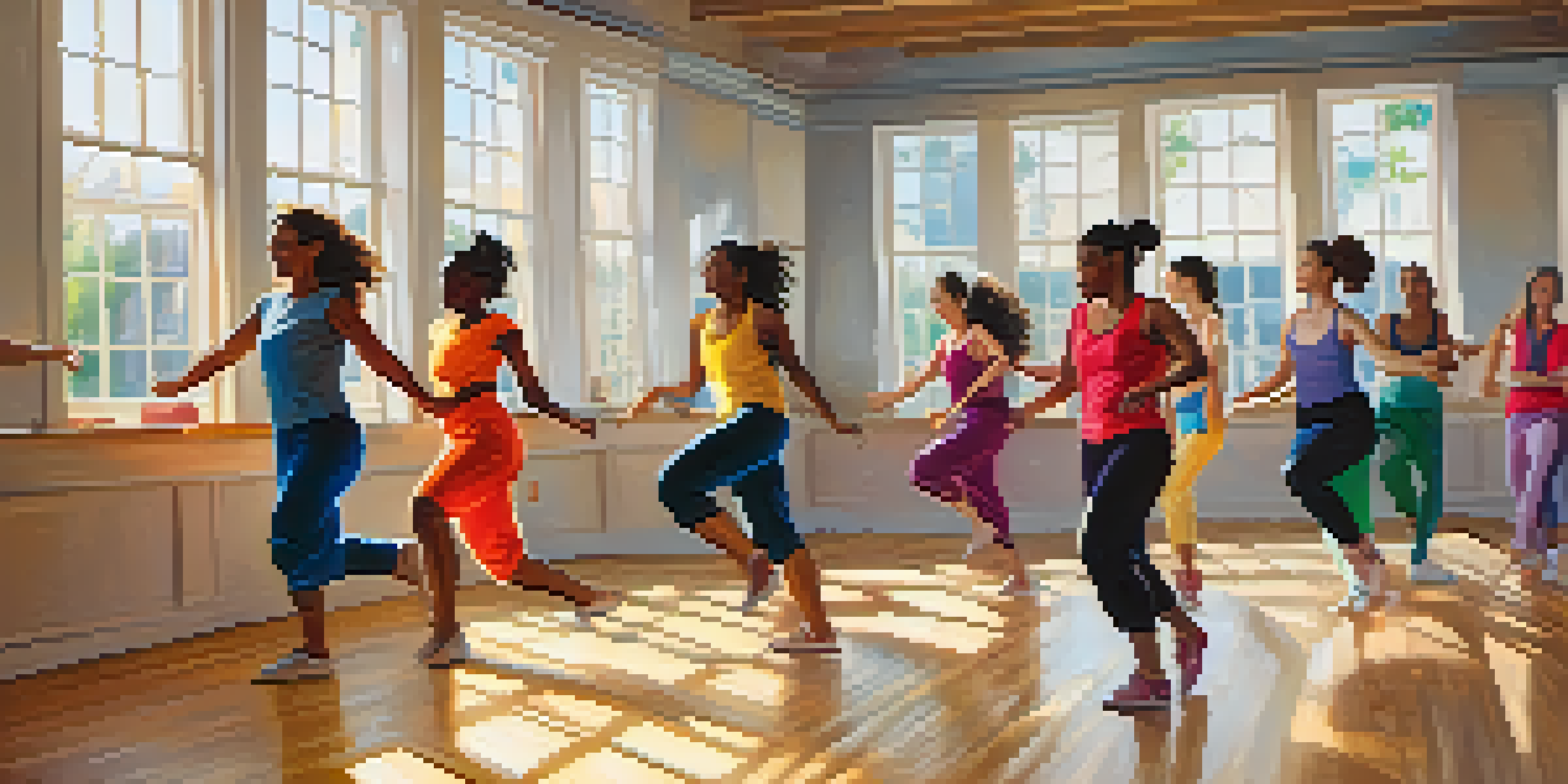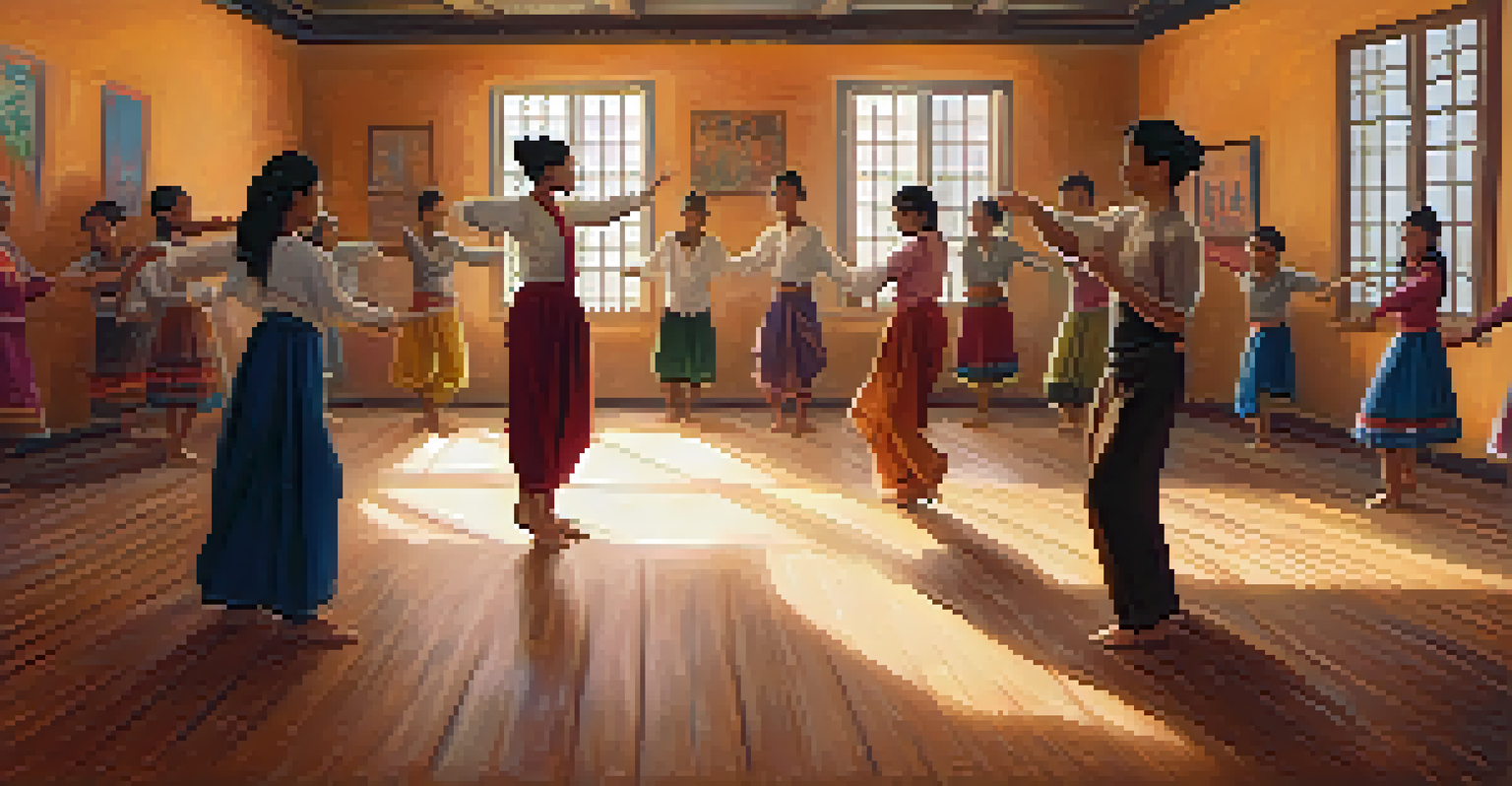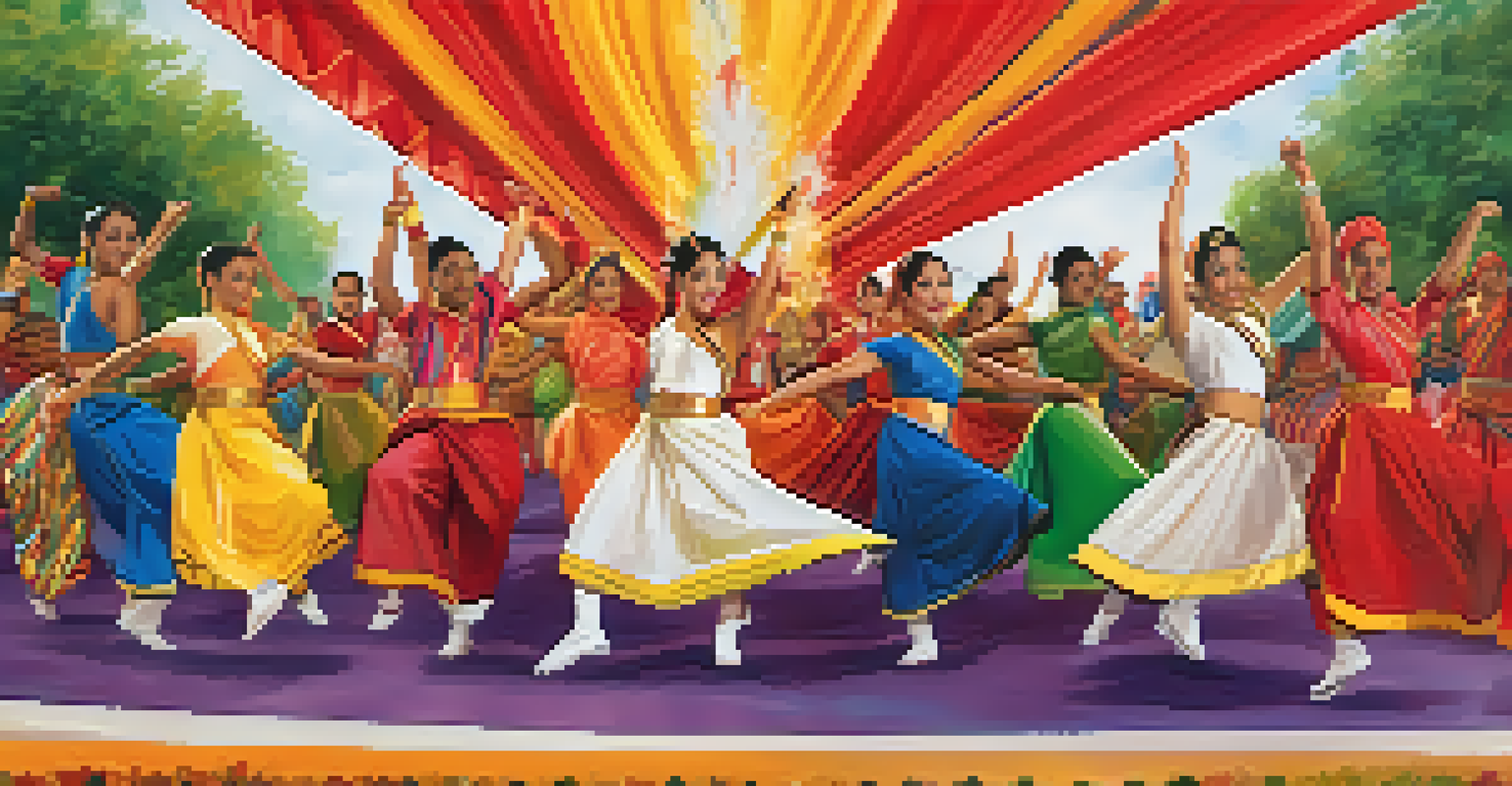Dance Workshops: A Space for Cross-Cultural Exchange

The Importance of Dance in Cultural Expression
Dance has long been a vital form of expression across cultures. It serves as a window into the traditions, stories, and values of a community. Through movement, participants can share emotions and experiences that might be difficult to articulate in words.
Dance is the hidden language of the soul.
For example, a traditional African dance might convey themes of harvest and celebration, while a contemporary hip-hop routine could express urban life and resilience. These diverse styles not only entertain but also educate us about different cultural narratives.
In dance workshops, individuals get the chance to experience these cultural nuances firsthand, fostering appreciation and respect for each other's backgrounds.
Creating a Safe Space for Learning and Sharing
One of the key elements of dance workshops is creating an inclusive environment where everyone feels welcome. This safe space allows participants to explore their abilities without fear of judgment or failure. It’s a melting pot where individuals from various backgrounds come together to learn and share.

In a workshop, a shy beginner might find the confidence to express themselves by trying out new moves, while an experienced dancer can refine their skills alongside others. The collaboration leads to mutual encouragement and growth.
Dance as Cultural Expression
Dance serves as a powerful medium for expressing the traditions, stories, and values of diverse cultures.
This supportive atmosphere not only enhances the learning experience but also builds lasting friendships that transcend cultural boundaries.
Understanding Cultural Contexts Through Movement
Every dance style carries its own cultural significance, and workshops often include discussions about these contexts. For instance, learning a traditional ballet piece might involve understanding its roots in European history, while a salsa lesson could delve into its Afro-Caribbean influences.
Dance is the joy of movement and the heart of life.
This educational component enriches the dance experience, as participants gain insight into the stories and struggles behind the movements. It transforms the physical act of dancing into a deeper cultural understanding.
By exploring these contexts, participants can appreciate not just the steps but the rich heritage they represent, allowing for a more profound connection to the art form.
Fostering Empathy and Connection Among Participants
Dance workshops often lead to transformative experiences that foster empathy. As participants learn to express themselves through movement, they also begin to understand the emotions and histories of others. This shared journey creates bonds that might not form in other settings.
For example, a dance focusing on themes of struggle and resilience can resonate with many, regardless of their background. Participants might find common ground in the emotions conveyed, bridging gaps that language sometimes cannot.
Creating Inclusive Learning Spaces
Dance workshops foster a safe and supportive environment where participants can explore their abilities and connect with others.
This connection nurtures a sense of community, reminding us that, at our core, we share similar feelings and aspirations, no matter where we come from.
The Role of Music in Dance Workshops
Music is a powerful catalyst in dance workshops, often serving as the heartbeat of the experience. Different cultures bring unique rhythms and sounds, adding depth to the dance forms being explored. Participants not only move to the music but also feel its emotional resonance.
For example, the vibrant beats of a Brazilian samba can energize a workshop, encouraging lively interaction among dancers. In contrast, a traditional Indian classical piece might inspire more graceful, meditative movements.
Together, music and dance create a holistic experience where participants feel the culture’s essence, enhancing their appreciation for diversity.
Challenges and Rewards of Cross-Cultural Dance Workshops
While cross-cultural dance workshops are enriching, they can also present challenges. Misunderstandings may arise when cultural symbols are misinterpreted or when participants feel unrepresented in a particular style. However, addressing these challenges opens the door to meaningful conversations.
For instance, an instructor might encourage participants to discuss their experiences and feelings about the dance styles being taught, creating a dialogue that fosters understanding. This exchange can lead to greater cultural sensitivity and awareness.
Empathy Through Shared Movement
Participants in dance workshops develop empathy and connection by expressing emotions and stories through movement.
Ultimately, the rewards of navigating these challenges are immense, as they lead to a more profound respect for the diverse cultural tapestries that make up our world.
Building Bridges Through Dance Communities
Dance workshops can serve as a foundation for building vibrant, cross-cultural communities. As participants engage in shared learning experiences, they often form connections that extend beyond the dance floor. This sense of belonging can be particularly valuable in a world that sometimes feels divided.
Local dance communities often emerge from these workshops, hosting events that celebrate various styles and cultures. This not only gives participants a platform to showcase their skills but also invites others to join in, further enriching the community.

By fostering these connections, dance workshops become more than just classes; they transform into hubs of cultural exchange, promoting unity and understanding.
The Future of Cross-Cultural Dance Workshops
As globalization continues to shape our world, the importance of cross-cultural dance workshops will only grow. They offer an opportunity for ongoing dialogue and collaboration among diverse groups. The fusion of styles can lead to innovative forms of expression that honor multiple traditions while creating something entirely new.
Future workshops may increasingly incorporate technology, such as virtual reality, to connect participants from around the globe. This could allow individuals to experience and learn from different cultures without the constraints of geography.
Ultimately, the future of these workshops is bright, promising continued growth in understanding, creativity, and connection through the universal language of dance.